Fossils found in Powys sheep field by researchers
- Published
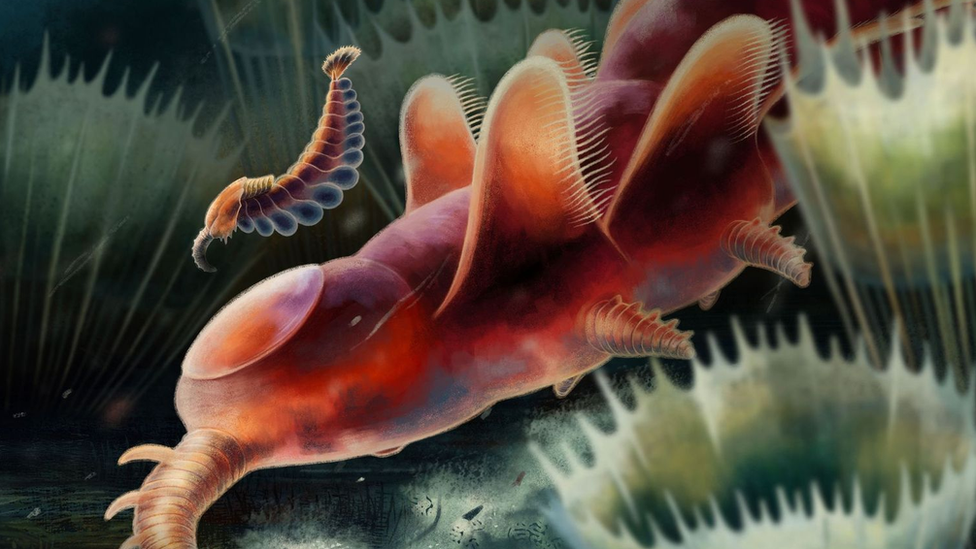
It is believed to be the first discovery of opabiniids outside of North America
Two fossils that were discovered by researchers are thought to be the first of their kind in Europe.
The specimens, found near Llandrindod Wells, Powys, were within seabed rocks from when mid Wales was covered by ocean.
It means they date back more than 400 million years and resemble the creature Opabinia, which lived in Canada 40 million years earlier.
The discovery was made by researchers at Museum Wales.
Independent researchers and Llandrindod residents Dr Joseph Botting and Dr Lucy Muir found the fossil deposit in a sheep field.
Fossils of a similar animal called utaurora came from rocks of a comparable age in the USA.
Opabiniids lived in the sea and were soft-bodied with a long narrow trunk which had a row of flaps along each side, thought to have been used for swimming, and pairs of stumpy triangular legs on the underside.
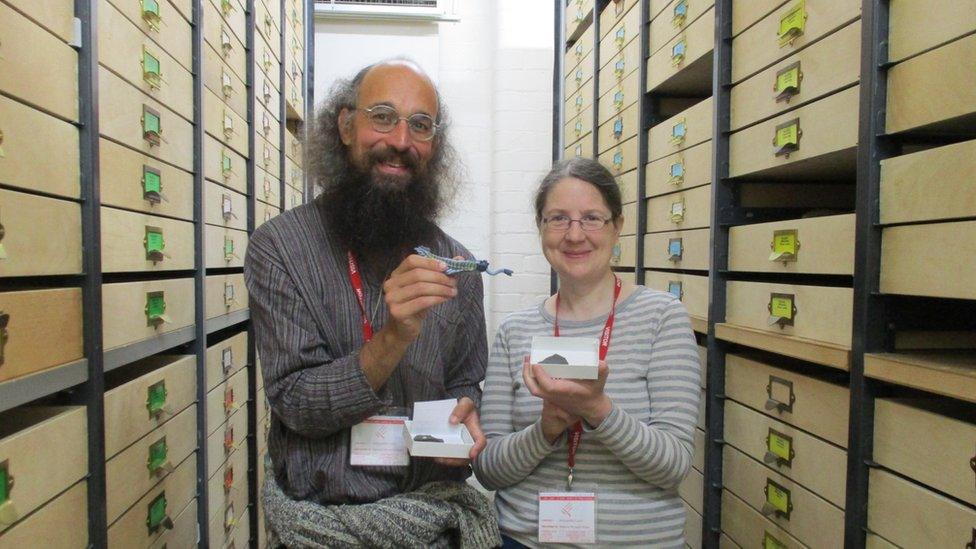
Dr Joseph Botting and Dr Lucy Muir are honorary research fellows at Museum Wales
Their most distinctive feature was an elongated nose-like feature, looking a bit like the hose of a vacuum cleaner.
It is thought the creatures used it to pick up bits of food off the seabed and to move them to its mouth, which lay behind it on the underside of the head.
The larger of the two fossils is 13 mm long, while the smaller one is just 3 mm.
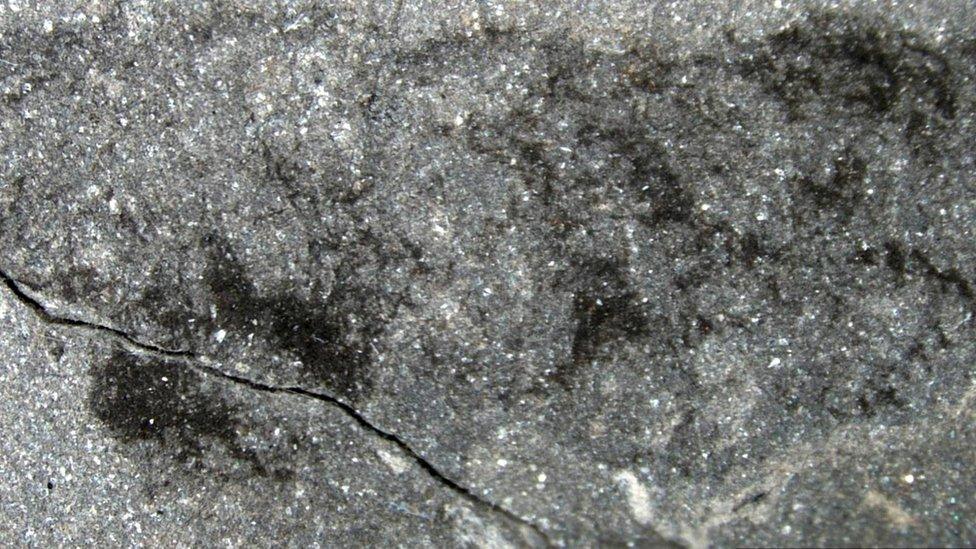
One of the new fossil animals has been given the scientific name Mieridduryn bonniae
One of the fossil animals was given the scientific name Mieridduryn bonniae, named in honour of Bonnie, the niece of the owners of the land where the fossil was found.
The rest of the name comes from the Welsh words mier, meaning bramble, and duryn, meaning snout.
Dr Lucy McCobb, senior curator for Museum Wales, said: "This is a fantastic discovery by our researchers. Joe and Lucy are working with other palaeontologists from around the world to study the fossils and decipher what they can tell us about life in Wales' seas over 460 million years ago.
"We look forward to finding out more about these Welsh wonders."

WHO DO WE THINK WE ARE?: Huw Edwards explores the source of Wales' identity
WALES ON AIR: A unique concert reflecting life in Wales

Related topics
- Published27 May 2019
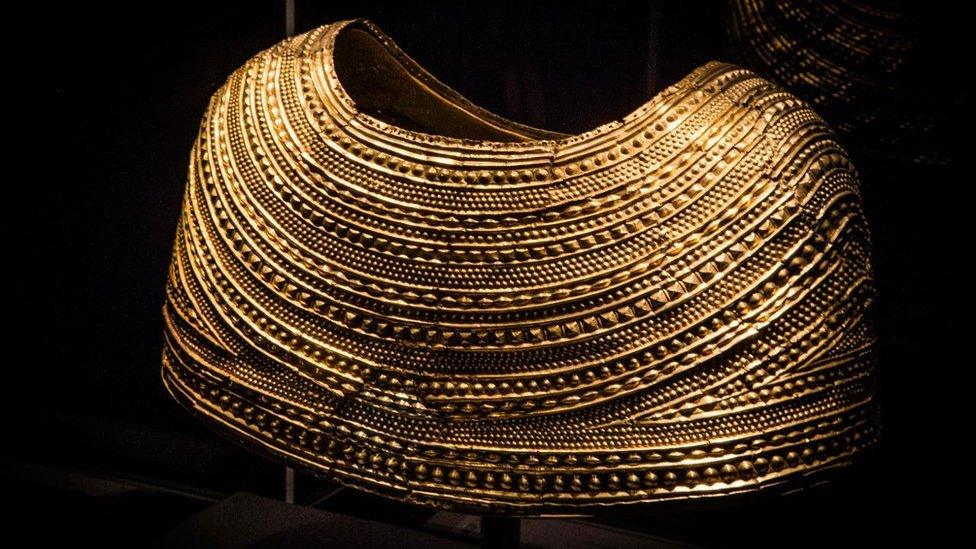
- Published2 February 2018
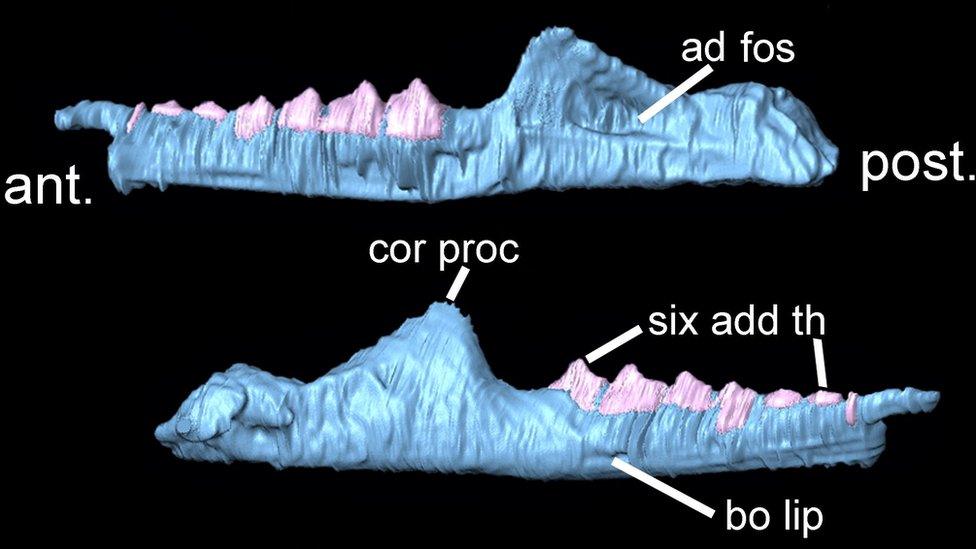
- Published26 August 2020
